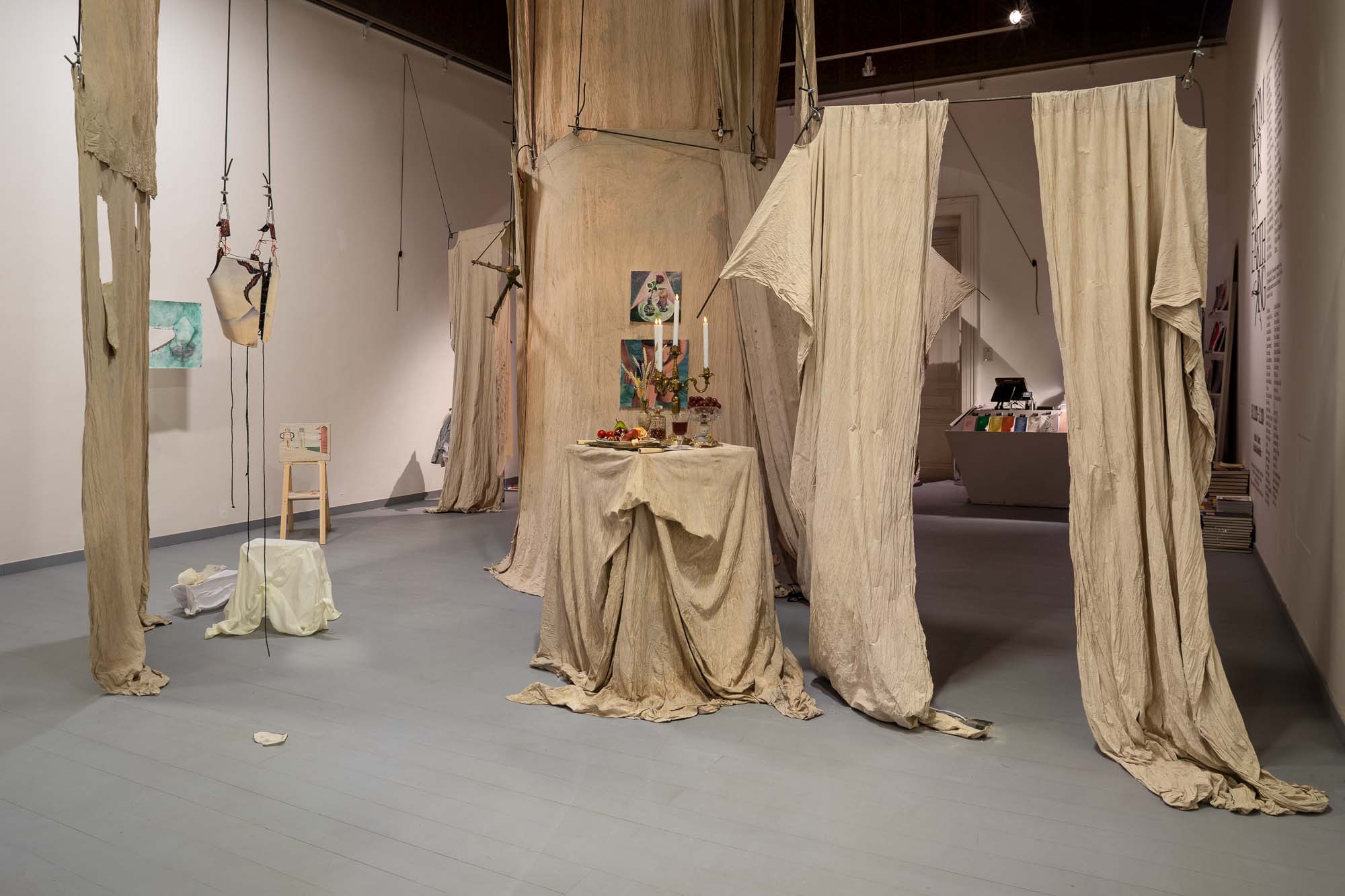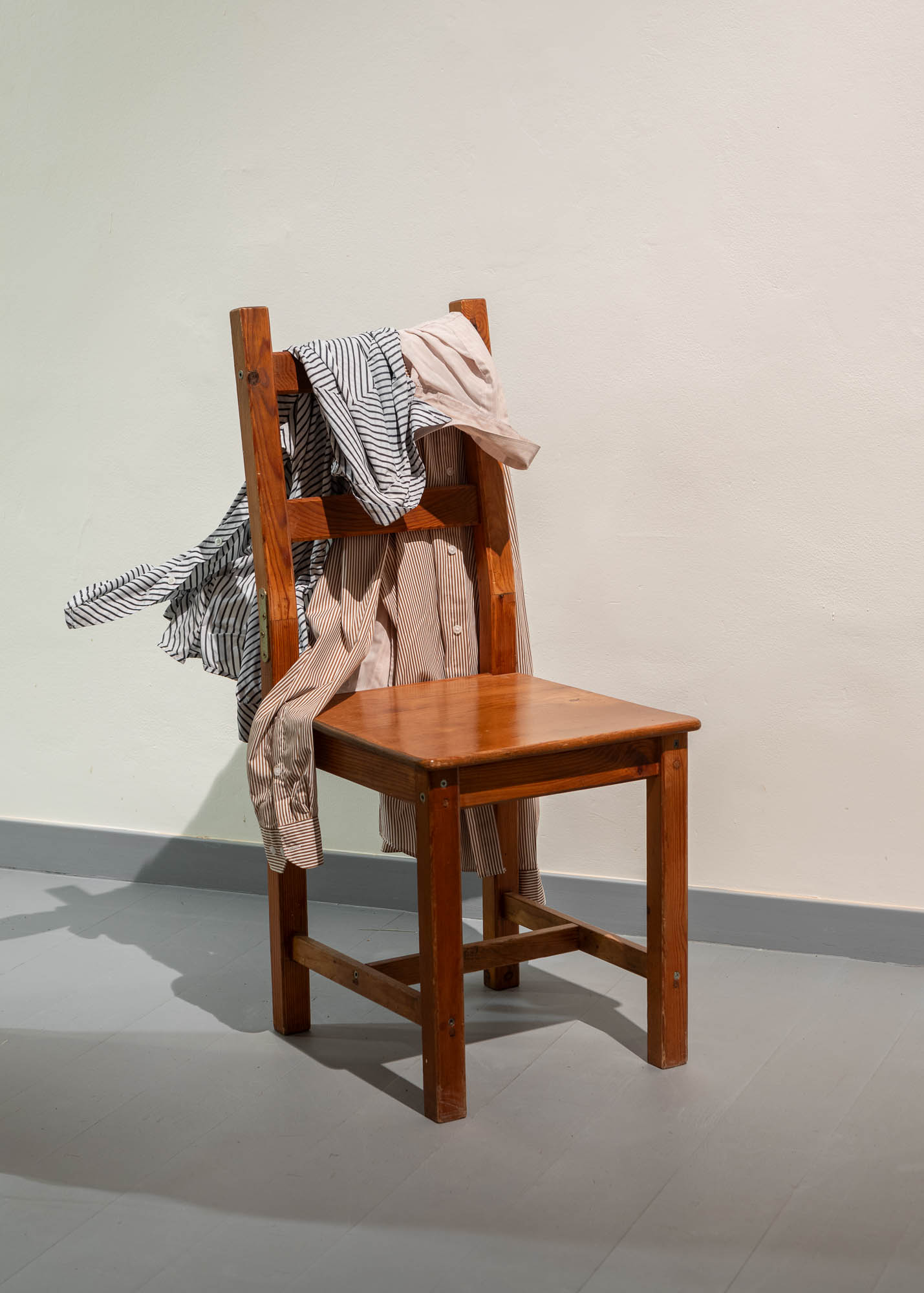Room for Unearthing
December 15, 2023 – February 3, 2024
Gallery UM, Prague, Czechia
In co-curation with Daniel Hüttler
Graphic design: Winona Hudec
Exhibition architecture: Martin Eichler & Pernille Christensen
Initiated by Michal Novotný
Exhibitors: Adéla Súkupová, Adrian Hazi, Alex Švígler, Anastázie Ilina, Anna Holínská, Anna Kazantseva, Anna Tůmová, Anja Romanova, Antonie Zichová, Anzhelika Palyvoda, Daniel Altera, Daniela Kuich, Daniil Tsvetkov, Dimitrij Mandzyuk, Emma Kabešová, Ester Parasková, Evgeny Tantsurin, Franky Daubenfeld, Hana Marhounová, Jiří Bartoš, Julia Prochnik, Kaleb Christian, Kateřina Forejtová, Kateřina Šípová, Kateryna Chuliy, Kristýna Polívková, Luka Matuella, Lukáš Šmejkal, Markéta Dočkalová, Markéta Královcová, Maya Lempeius, Nele Vandenberghe, Noa Vetter, Peter Mičák, Reyhaneh Rajabi, Richard Klippfeld, Šenay Kobak, Šimon Dub, Šimon Jan, Tamara Pauknerová, Tzuchi Su, Viktoria D'Agostino, William Metin Martin
The second exhibition of its kind, Room for Unearthing, is a continuation of the artistic collaboration between two universities in neighboring Central European countries – UMPRUM in Prague and Die Angewandte in Vienna. The group exhibition of the painting studios of Lenka Vítková and Henning Bohl presents not only a new selection of contemporary artistic practices, but also a new collaborative work – Sounds of Unearthing. This compiled soundscape complements the collaborative work from the first exhibition, The Atlas of Unearthing*, which was presented in the summer of 2022 at the Czech Center in Vienna. The Prague version of the project places greater emphasis on collaborative works while adapting its architectural form to the site.


Alongside the "heroes and heroines" from the previous Days of Unearthing exhibition, there is a quiet, unobtrusive and parallel life that patiently waits and exists alongside them. It is a world of absent characters, objects and traces in suggestive scenes of heterogeneous everyday life. By exploring the material world through painting, sculpture, performance, craft or new media, the students’ exhibited works capture what the contemporary practice of the visual artist looks like within the confines of still life.
In the hierarchy of artistic genres, codified by the French Academy in the 17th century, still life was ranked fifth last after historical painting, portraiture, genre painting (scenes from everyday life) and landscape. Still life and landscape were considered inferior because they did not include human subjects. A cultural analyst Rebecca Birrell shows, however, that assemblages of objects, inanimate and sometimes animate nature, often testified to an intrinsic quiet radicalism: an intimacy and ambition for which the form was a mediator.
The symbolism of depicted objects and the taste of a given artist can refer both to art history, as well as to the practices of contemporary artists. In short, the choice of subjects within this genre offers great freedom. The associated feelings of melancholy, nostalgia or the raising of questions about consumerism and the harnessing of nature are not infrequently an accompanying phenomenon. Finally, in addition to references to vanitas or memento mori, the still life can be seen as an artistic study, a way for the artist to practice his or her skills, to arrive at affinities of his or her own style.
Thus, the Room for Unearthing project invited current students from both studios to contribute to the exhibition by producing still lifes, ideally on the basis of work they have discarded in the past. Through this reworking, reconstruction, re-engagement and adaptation, the artists also proceeded to reflect on contemporary modes of sustainable production (both material and ideological), as well as reflecting on the classical still life painting image to reintroduce notions of domesticity and preservation into their work, while it was entirely up to them to choose the medium for their works.
Students from a previous exhibition worked together on The Atlas of Unearthing.* This can be seen in hindsight as a remnant of a particular time, a relic of a past exhibition, a still life in its physical form. With a view to reinforcing the aspect of transmedia, the collaborative work in this exhibition becomes the compiled album Songs of Unearthing – a soundscape that aurally fills the space of the silent genre and evokes a complete composition of objects and environments, to which each exhibitor contributed a thirty-three-second recording.














The book The Atlas of Unearthing contains more than 150 original artworks by 55 artists: Alex Macedo, Ann-Sophie Ghering, Anna Holínská, Anna Kazantseva, Antonie Zichová, Barbara Novorodá, Bety Krňanská, Chattip Metchanun, Christian Gailer, Daniil Tsvetkov, Dimitrij Mandzyuk, Ei Ozawa, Elena Altaba Herrán, Emil Puchner, Evgeny Tantsurin, Evelyn Vonesch, Franky Daubenfeld, Hanna Schmidt, Jorinna Girschik, Juliana Castaño, Kaleb Christian, Lavanya Thakur, Léo Coignaud, Leonie Plattner, Lisa Maria Wirzel, Lizaveta Hrydziushka, Lucia Schwemer, Lucie Brskovská, Ludovico Scalmani, Lukáš Šmejkal, Marcia Schmidt, Marie Fidesser & Marei Buhmann, Marielena Stark, Markéta Dočkalová, Martina Staňková, Masha Kovtun, Matěj Racek, Naomi Shintani Deibel, Nicolas Garaj, Nikola Kopp Lourková, PoL…, Radim Pergl, Sara Bojović, Sara Roeth, Sarah Buhmann, Sebastian Mittl, Selana Ayşe Türgen, Šenay Kobak, Šimon Dub, Sofie Fatouretchi Royer, Tamara Pauknerová, Vanessa Schmidt, Yaël Fidesser, Yoon A Lee